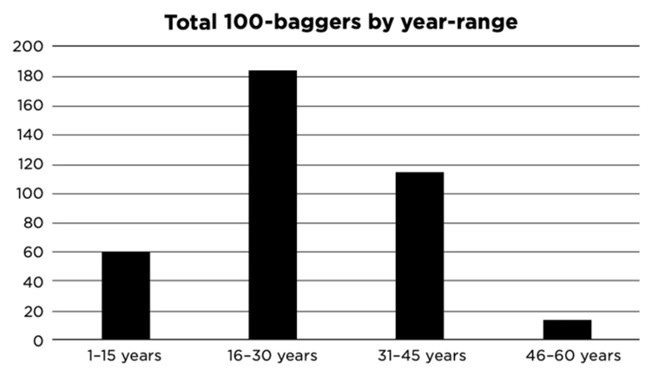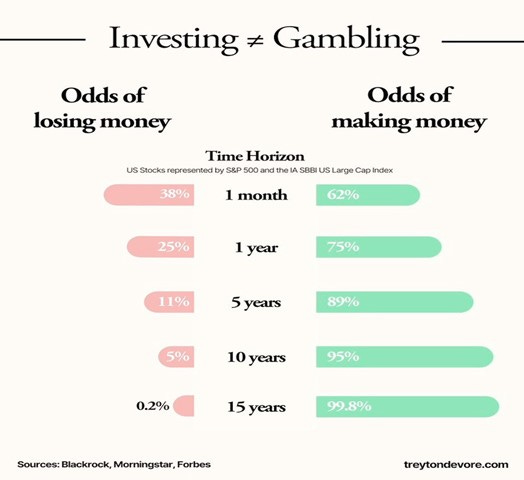How do you become rich?
In general, we do not re-post old articles. There is one exception to this. This article was originally written in September 2024. The contents remain relevant. A lot of subscribers have joined since September and therefore may not have seen it.
How do you become rich?
This is a question that a lot of people are interested. Every bookshop has shelf of books dedicated to the subject. Unfortunately many of them have misleading or dangerous titles such as “Become a millionaire day trading stocks.”
I believe the true answer comes in three stages
1. How not to be poor.
2. How to be rich.
3. How to be very rich.
The points I make below can be criticised as just common sense and so obvious, as to be not worth stating. Fair enough, but – sometimes we need not new lessons but a constant repetition of the old ones.
How not be poor
The key thing is to start when you are young and invest in your own human capital. Study hard and learn as much as possible and work hard at school and college. If possible, get some vacation jobs and start saving money. Choose to study something you enjoy but which also has a good chance of leading to a well-paid job. If you are really interested in Eastern Philosophy, study in your own time.
After you get a job and launch your career, continue to invest in yourself taking advantage of all training opportunities. In the early days, this investment in your own human capital will be more important than the pay you receive.
“Generally speaking, investing in yourself is the best thing you can do. Anything that improves your own talents; nobody can tax it or take it away from you. They can run up huge deficits and the dollar can become worth far less.”- Warren Buffett
Once you are earning, save as much as you can and spend as small a fraction of income as possible. Do not borrow or acquire a credit card.
Your aim is to grow a pot of wealth at a young age. This will be very difficult to do but it has to be done. At a shareholder meeting in the 1990s, Charlie Munger commented on the challenge of reaching the critical first $100,000.
“I don't care what you have to do," he said. "If it means walking everywhere and not eating anything that wasn't purchased with a coupon, find a way to get your hands on $100,000."
Today, $ 100,000 is ~$200,000 due to the ravages of inflation on the last three decades. To paraphrase Munger, after the first $200,000, you have to keep saving but you can relax a bit.
So with a bit of luck, studying the right subject well, investing in yourself and living well within your income will be enough to ensure you will not be poor.
How to be rich?
In order to become rich, you have to invest your pot of $200,000, adding to it as much as possible periodic and let it compound over time.
The YouTube Video explains the critical importance of compounding
At a young age, you must take some risk with investments. The problem with safe investments like bank deposits or bonds is that, while you get regular income in the form of interest or coupons, the capital you get upon maturity will only be the same as you invested. Indeed, given inflation, in real terms ,you will make a capital loss. Hopefully, the real loss on capital will be more than offset by the interest income or coupons received. You have to take risks and buy stocks which have a good chance of capital appreciation.
What is the best strategy for investing in equities? As in most things,the key thing is to keep things simple
Let us assume that you are a relatively cautious investor and do not have much knowledge about stock market investing, and are not interested in finding out, or do not have the time, to do so.
The best strategy is to choose 2-4 low cost Index ETFs and commit to a programme of investing a fixed amount regularly.
In addition,
this must be done over decades, increasing the amount invested over time.
the strategy must be in zero-tax vehicle to maximise the returns.
If you do this over three or four decades, you will have a very fine result and become rich.
This is a simple strategy for wealth creation, appropriate for most people. It does not require any knowledge of individual companies and there is no need to pick stocks. Through the ETF, you invest indirectly in all the stocks in the underlying indices. Regular investing means market fluctuations do not matter and you get the benefit of dollar cost averaging. If markets fall, the next time you invest, you will get more shares for your fixed dollar investment.
The ETFs are super low-cost as there is no expensive Fund Manager to pay for. In addition the strategy require no financial advisor so that is another cost avoided. The article below explores why Warren Buffett thinks most investors should invest in Equity ETFs.
This strategy can give very good results and is easy to implement and requires very little time and effort.
3.How to get very rich
If you want to try do better than the dollar-cost average ETF strategy even by a relatively small amount, you have to do a lot more work and spend a lot more time on investing
You have to find good quality companies, invest in them at the right price and if possible hold them for decades. This is the strategy that drives the Long-term Investing Substack.
When we started the Substack, we wrote for articles which were a small effort to outline our “philosophy” of investing.
These can be found here, here, here and here.
Interested readers should read these to get a flavour of the argument. The investor, Terry Smith outlined his investment policy in three steps as follows:
Step 1: Invest only in good quality companies
Step 2: Only buy them at a reasonable price
Step 3: Do nothing
This article give more information on Smith’s investment credo.
Smith’s manifesto is admirably brief but it raises at least two questions.
How do you determine what a good company is ?
How do you know when they are trading at a reasonable price?
These are two of the most important questions in long-term equity investing. This Substack is simply a long, sustained and consistent effort to answer these two questions.
A Warning
We should conclude with a final warning. You may join us, do all the fundamental work, spend all the time doing the reading and thinking and invest for decades using our long-term investing framework.
However, after all that, you might find the overall results are no better than the no- effort Index, ETF average cost strategy outlined above.
However, you can only know this only after the event. There is a risk it might prove to be nothing but a waste of time and effort over decades. This does not bother us because, luckily, we enjoy the journey as well as the destination.
Appendix 1
Why should you invest over the long run?
Big results such as 100X returns take time to achieve
The longer you invest, the lower the chance of losing money.




